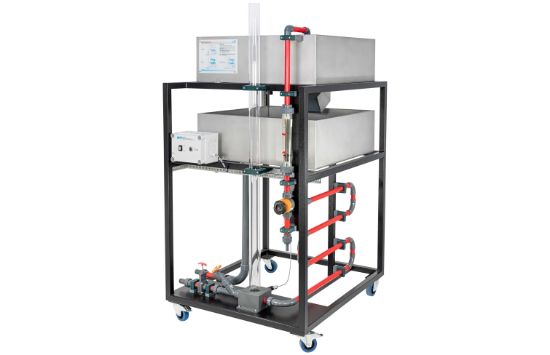The GUNT Transient Drainage Processes Trainer demonstrates important phenomena related to the drainage of storage reservoirs, such as rainwater retention basins and storage lakes. It enables the study of delayed drainage effects and surge chamber behavior, which are critical for reservoir design and flood control.
Product Features
- Transient drainage processes are considered when designing storage reservoir dimensions, applicable to rainwater retention basins and storage lakes
- Rainwater retention basins delay drainage through temporary intermediate storage
- Storage lakes serve water supply, energy conversion, and flood protection by rising water fed over an overflow
- Drainage from reservoirs is realized via pipelines, tunnels, or similar conduits
- Surge chamber installed to prevent water hammer in pipes and fittings during rapid flow changes
- Trainer includes basin with adjustable weir and a second deeper basin with overflow and drainage line
- Surge chamber integrated into the drainage line for demonstration
- “Rainwater retention basin” experiment simulates retention basins A and B, with discharge adjusted by valves illustrating delayed drainage
- “Storage lakes” experiment demonstrates transient drainage in two long-term reservoirs using a free overfall weir
- “Surge chamber” experiment creates water hammer by rapid gate closure, visible as pendulum water oscillation
- Pressure sensors detect water levels in basins and surge chamber
- Data displayed via GUNT software for detailed monitoring and analysis
Benefits
- Provides hands-on understanding of reservoir drainage dynamics and surge effects
- Supports study of delayed runoff and water hammer phenomena in practical scenarios
- Enables visualization and analysis of complex transient flow behaviors
- Ideal for civil engineering, hydrology, and environmental science education
Why Choose the GUNT Transient Drainage Trainer?
This comprehensive trainer allows students and professionals to explore the dynamics of storage reservoir drainage, including surge chamber operation and water hammer effects. Its precise instrumentation and versatile experiments make it a vital tool for hydrological and hydraulic engineering studies.

